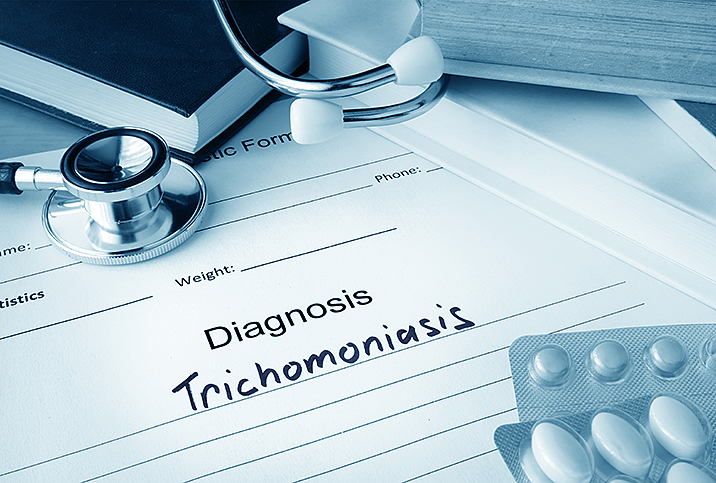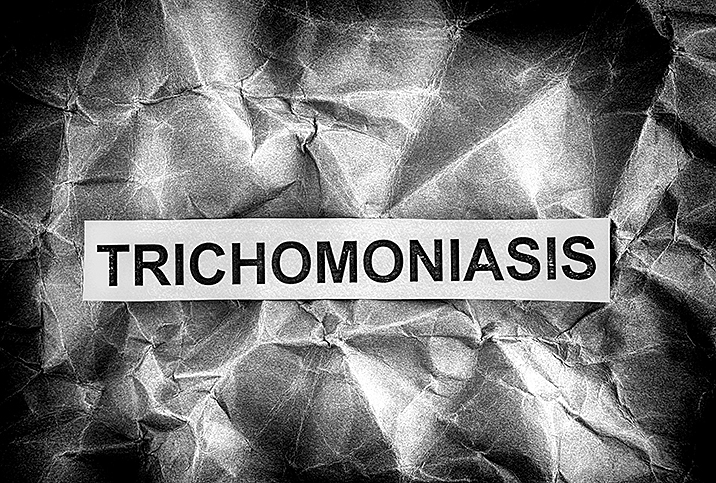How to Stop the Spread of Trichomoniasis

Trichomoniasis is a common sexually transmitted disease (STD), caused by the parasite trichomonas vaginalis, which affects about 3.7 million people in the United States, most often women. Only about 30 percent of people who contract trichomoniasis develop any symptoms, which is why it is important for women—especially if they’re sexually active—to regularly see their OB-GYN who routinely test for the condition.
If you do experience signs or symptoms, which can develop anywhere from five to 28 days after a trichomoniasis infection occurs, you might notice a number of symptoms, some of which overlap between men and women.
Women should look for the following:
- Unpleasant vaginal odor
- Discomfort during sex
- Pain with urination
- Gray or yellow-green vaginal discharge
- Vaginal itching, burning or soreness
Men may experience one or all of these symptoms:
- Penis discharge
- Burning with ejaculation
- Irritation or itching inside the penis
- Burning with urination
Having trichomoniasis can increase your risk of getting infected with human immunodeficiency virus (HIV) and other STDs. In addition, pregnant women with untreated trichomoniasis can experience premature delivery or give birth to babies with low birth weight. Plus, they can transmit the infection to their babies during delivery.
You should talk to a physician about pregnancy planning if you or your partner have tested positive or recently been positive.
How trichomoniasis spreads
You can contract trichomoniasis during sexual intercourse with an infected person. Women can get a trichomoniasis infection in their vagina, vulva, urethra or cervix, while men can contract the infection inside their penis (in the urethra). It can also spread to your mouth, hands or anus. And remember, even if you don’t experience any symptoms, you can still infect others.
Anybody who is sexually active can contract trichomoniasis, but certain factors increase your risk of getting it. Women have a higher risk than men, and older women are more likely to contract trichomoniasis than younger women.
Other risk factors include having multiple sex partners, having a partner with multiple sex partners, not using a condom during sex and having a past history of contracting sexually transmitted diseases.
How do I get diagnosed and treated?
To find out if you have trichomoniasis, your doctor will take a sample of either vaginal fluid (from women) or urine (from men). Lab technicians examine the sample under a microscope to look for the presence of trichomoniasis parasites.
Fortunately, treatment for trichomoniasis is simple. Your doctor can prescribe an antibiotic and/or an antiparasitic medication.
During treatment, you should keep in mind the following recommendations:
- Follow all instructions when taking your medicine, including not drinking alcohol for 24 to 72 hours.
- Avoid sexual intercourse until the infection clears, which might take about a week. Your doctor can let you know when it’s OK to resume having sex.
- Inform any sexual partners about your infection. They will need to be tested and possibly have the same treatment.
- Ask your doctor whether you’ll need to be retested several weeks or months later to make sure the parasite is gone and you haven’t been reinfected. About 1 in 5 people who receive treatment for trichomoniasis get reinfected within three months. Left untreated, the infection can last up to several years.
- Ask your partner(s) to get tested or to see a healthcare professional for testing and treatment planning.
Reduce your risk for trichomoniasis
To reduce your chance of getting infected with trichomoniasis, consider abstaining from sexual intercourse. If abstinence is not possible or preferred, practice safe sex and use a condom correctly every time you engage in sexual activity, or have sex with just one mutually monogamous partner.
Before having sex with a new partner, both of you should get tested for STDs and have an open and honest discussion about completing treatment if one or both are positive. To optimize your sexual health, know the signs and risk factors for trichomoniasis and seek prompt treatment when necessary.
















